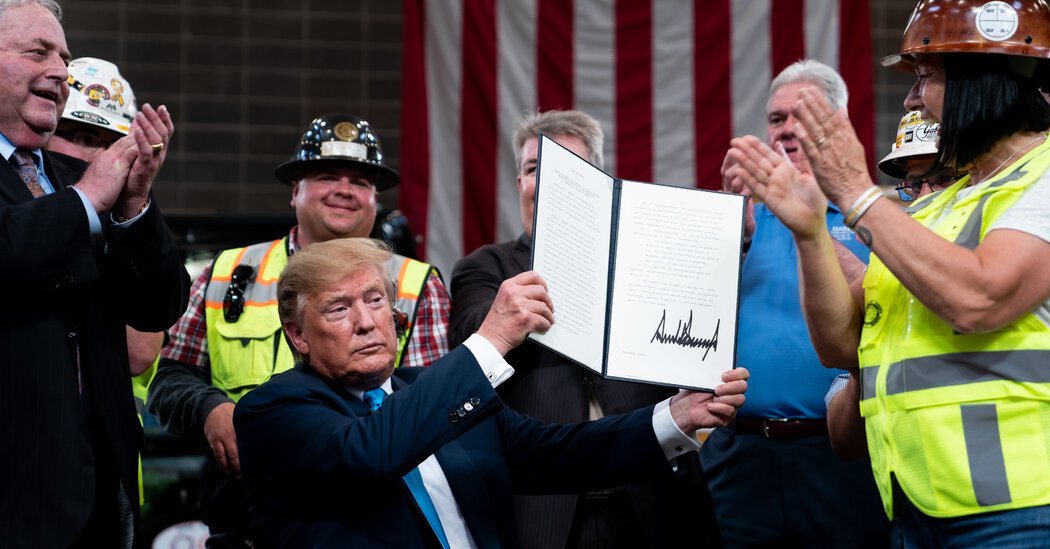Kamala Harris calls global warming an “existential threat.” Donald Trump dismisses it as a “scam.”
The window is closing for nations to reduce enough of the pollution that is heating the planet to avoid the most dangerous levels of climate change, according to scientists across the world. And the outcome of next week’s presidential election could determine whether the United States and other countries meet that challenge.
If he returns to the White House, former President Donald J. Trump, who last month called climate change “one of the greatest scams of all time,” plans to build on his first-term attacks on the environment when he pulled the United States out of the Paris climate agreement and rolled back more than 100 environmental regulations.
In a second term, he has promised to end federal support for a clean energy transition and hamstring wind and solar development while expanding oil and gas production — including drilling in the fragile Arctic wilderness. He has said he would again withdraw the country from the Paris accord and potentially go further, blocking the United States from negotiating future global climate agreements.
Vice President Kamala Harris, who has called climate change an “existential threat,” has not laid out a detailed plan regarding climate and the environment.
But she is widely expected to continue federal support for wind, solar and other forms of clean energy, along with electric vehicles, in an effort to bring clean energy manufacturing onto American shores while shifting the economy away from fossil fuels. In 2022, she cast the tiebreaking vote on the biggest climate law in U.S. history, the Inflation Reduction Act, and has pledged to fully implement it.
Although congressional Republicans may block new laws and the conservative supermajority on the Supreme Court has hemmed in the authority of the Environmental Protection Agency, a President Harris would be likely to try to use regulatory power to cut the emissions that are driving climate change. She is also expected to try to reduce the air and water pollution that is prevalent in marginalized communities.
